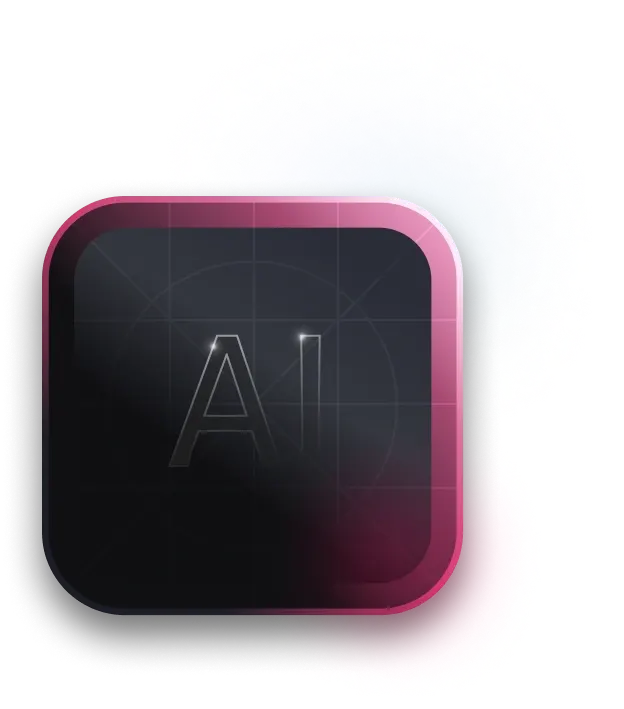Following the human wellness tracker market trend, modern technologies gradually transformed the pet health segment as well. The global veterinary telehealth market is currently estimated at $119.6 million, with a projected growth of 17.6% annually. Innovative tech solutions can provide a precise overview of a pet’s health condition and a clear diagnosis for veterinarians. With the AI veterinary app, owners have numerous opportunities to maintain almost every area of their pet’s health and provide better care for them.
As public demand for wellness tracking continues to grow, our team of developers is ready to introduce quality software with extended functionality. This is why we decided to share our take on creating a veterinary application that will maintain the high medical standards your clients and patients deserve. But let’s start from the top.
Current Challenges in AI Veterinary App Development
Traditional veterinary care simply cannot go smoothly 100% of the time. Both specialists and clients must deal with fel obstacles, which often influence service efficiency. Pet owners must use costly and time-consuming services to maintain their pets’ health conditions. Veterinary practitioners must put more effort into scanning abnormal medical signs during a diagnostic test.
Here are the main gaps in the market for smart pet health monitoring we may point out at the moment:
- Monitoring animal health. Traditional veterinary is almost always costly. Bringing their animals to the vet on a regular basis is not something to be afforded by just about everyone. This leads to the ignorance of many health problems that need to be treated immediately among pet owners who are short on money.
- Late diagnosis and poor treatment. It takes a lot of time to extract and analyze data from numerous sources to make the final diagnosis and create the optimal treatment plan. This is especially true when a vet sees an animal for the first time without knowledge of the case. As a result, a pet’s health condition might get worse before receiving the necessary help.
- Drug discovery. Classic veterinary keep the drug discovery process complicated due to the need for in-depth data and effective treatments. It might take even more time to find the right spot to obtain the prescribed medication.
Challenges that AI veterinary apps can address in pet healthcare
As you may well realize, AI does not simply come in as a universal miracle tool that solves all the problems right away. Field deployment of AI-based solutions in clinical practice comes with technical and methodological shortcomings of its own. It is important to keep track of these primary challenges of AI in healthcare (especially, if you are out to integrate or create a smart solution of your own):
- Access to medical data. AI can standardize medical data by organizing it into high-quality datasets. When using the wellness tracking software, the pet’s health dossier can be stored in one place, simplifying the diagnosis and treatment processing.
- Re-engaging with pet owners. Many pet parents show up at a clinic, thinking the vet is ready to answer all their questions in one go. This is not the case due to the limited amount of time on offer per patient. Pet tech technology makes it possible to receive valuable information without leaving the comfort of one’s home.
- More precise treatment. AI algorithms can analyze medical data, such as X-rays and MRIs, to detect any kind of abnormality. AI can also help veterinarians make a professional diagnosis by specifying patterns in symptoms and medical histories.
Explore the world of Adaptive AI
Benefits of AI in Veterinary Medicine
As the underlying tech progresses and becomes better integrated with different spheres of our lives, it also brings the potential to advance animal health. Here are the main benefits that might persuade you to invest in it:
Preventative care and early intervention
Addressing a medical issue before a disease or an outbreak occurs helps with possible preventive measures. The prediction cannot always prevent the occurrence. Nevertheless, it makes it easier for veterinarians to take proactive care of patients. And animals will have to suffer less and live longer.
Enhanced accuracy of diagnosis and treatment
Using the data collected by AI, pet owners can ensure the well-being of their little friends. It is also possible to record a video and send it through the app, which may analyze the available health factors to suggest a possible diagnosis and treatment. The same data can be sent to the vet for personalized recommendations.
Convenience boost for pet owners
Many owners do not go to the vet’s office because their problems do not warrant a visit. For instance, minor scratches or limping need merely a short consultation. They can now handle these minor problems, too, by means of an AI veterinary application that boasts live chat and video conference features. Talking to experts is more efficient than blindly following the guidelines found online.
Data tracking and insights
Veterinary software can be efficiently integrated with remote monitoring devices to track animals’ well-being. Pet owners can use a mobile app to track detailed information about their pet’s feeding schedules, physical performance, or sleeping habits.
Crucial Elements to Include in the AI Veterinary App
In order to unravel the ultimate potential of employing AI in veterinary medicine, you need to pack it all up into an appealing design and efficient user experience. With more and more users connecting via mobile devices, getting your mobile app design right the first time is crucial for attracting and retaining pet owners. A good user interface should be easy to use and totally intuitive. Make sure to decide on the main functionality the team will work on early on and follow these well-tried stages.
Identifying key features
A pet health tracker application may offer various features depending on its initial purpose. The most relevant ones to consider include:
- Body tracking. Users get to stay aware of the general health condition of their pets at all times. Based on that, they can follow actionable steps to maintain or strengthen the pet’s well-being.
- Diet and exercise guidelines. Users can build an individual regime that plans specific meals for their pets. The same goes for the pet’s physical activity, which should be adjusted to specific needs.
- Symptom checker. You can also detect the most recent changes in your pet’s well-being. Based on the collected information, you may easily receive a possible treatment plan, vitamin intake schedule, and physical activity timing.
- Medication and vaccination reminders. Lastly, you get to store all medical records in one place, keeping them automatically updated and available for sharing with a vet. This helps consistently provide the necessary medication according to a strict schedule while maintaining vaccination dates based on your pet’s needs and healthcare standards with the help of an app and a vet.
Integration of AI veterinary algorithms and data sources
AI algorithms are used to analyze real-time data from a pet health-tracking application. This enables pet parents and vets to track health changes by aspect, point out potential issues, and handle more underlying tasks. Here’s what different algorithms can do:
- Machine learning for pattern detection: This algorithm helps categorize unseen data and makes suitable predictions using various learning mechanisms. It can detect specific markers that may be difficult for humans to identify, which enables higher accuracy and faster diagnosis.
- Data collection from wearables: Treatment plans can be customized according to individual needs. Wearable devices store data and integrate it with AI systems, which then generate recommendations for medication schedules, dietary adjustments, and physical activities.
- Integration with veterinary databases: Your smart vet app’s AI can be trained on a vast database in order to manage and process data proactively. The well-trained AI helps recognize patterns and make accurate diagnoses.
Our AI and Data Science Case Studies

Data Privacy and Security
Pet industry developers implement modern technologies to find new ways to boost the immune system and overall quality of pets’ lives. Apparently, all this tech happens to be a source of useful data that might put personal security at risk. Here are the main methods for protecting sensitive data:
- Encryption prevents unauthorized users from accessing others’ personal data. This keeps users’ details hidden from scammers and fraudsters.
- Masking replaces sensitive data with random characters. You can also replace data with a low-value token for further tokenization.
- Data erasure cleans a data repository that is no longer active. This helps make sure it contains only relevant information for pinpointing a diagnosis or handling any other kind of task.
- Data flexibility involves full, differential, and incremental support of critical medical records. Storing valuable data in different locations makes it recoverable and resilient to fraud.
Fulfillment of data privacy regulations
A data leak can cause a lot of harm to the reputation of developers, vets, and animals. Security measures are important for storing and processing medical records in a way that would minimize the risk of cyber attacks. National legislation aims to protect sensitive data by means of stringent security norms.
Our team of developers always refers to high standards, national laws, and strict policies that set incident response requirements. Establishing security incidents and their consequences for the pet wellness tracking application is also important. We help with that, too.
Take the first step toward smarter software solutions
Future Potential of AI in Pet Healthcare
To embrace the full potential of AI, the veterinary sphere should foster curiosity about AI in pet care practices. Once integrated, AI in veterinary medicine can significantly improve diagnoses, personalize treatment plans, and prevent diseases. This greatly benefits veterinary staff as they can devote more time to delivering exceptional care and a great client experience.
Overview of the emerging trends and technologies
The pet industry started benefiting from technological advancements in a major way. Some of the recent trends include:
- Non-invasive tracking based on a dog’s noseprint. A potentially revolutionary way of reuniting missing animals with their owners is safer than tags and microchips.
- Biosensors integrated with digital monitors can track food intake, physical performance, and other aspects of the pet’s life. Wearable sensors for animal health care are known for their multi-faceted functionality. They mainly function as a general health monitor to help pet owners and their vets maintain different aspects of the animal’s health.
- Ingestibles are advanced smart pills that help visualize the internal picture of the pet’s organism once ingested. For example, ingestibles are actively used on cows to indicate disease symptoms and prevent them.
- E-textiles are a type of wearable tech that helps manage horse health. The specialists at Purdue University developed a special horse blanket based on nanotechnology to track a horse’s cardiac, muscular, and respiratory systems. The mechanism generates waves into the existing textiles and patterns as both a garment and a health monitor.
Conclusion
AI-driven tools are revolutionizing pet healthcare by making veterinary more effective for pet owners and medical staff. With the dynamic progress of AI, the industry has already experienced significant improvements. This transformative technology enhances the efficiency of veterinary practices and paves the way for innovative diagnostic and treatment methods.
Remember that you can bring a lot of ideas to realization by creating an AI veterinary medical app. For one thing, you can create and deploy all-inclusive software to cover the average needs of pet owners. Contact us to discuss your idea and create a pet app that will further revolutionize veterinary medicine.

Our team is dedicated to delivering high-quality services and achieving results that exceed clients' expectations. Let’s discuss how we can help your business succeed.


SHARE: